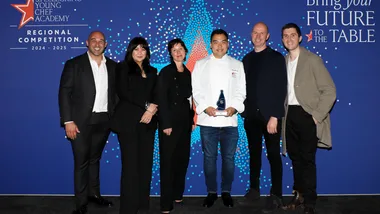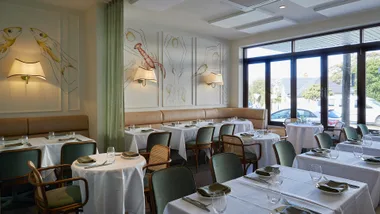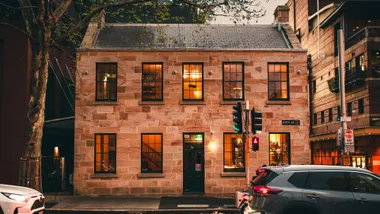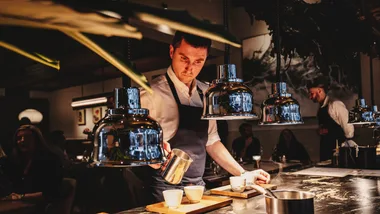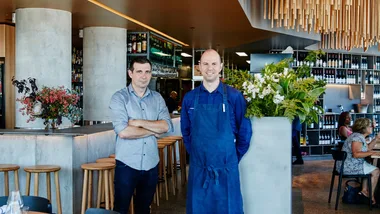Farm-to-table is a neat catchcry but, argues Dan Barber, one of its chief advocates, it doesn’t go far enough.
Dan Barber is well placed to talk about farm-to-table dining. He was raised on a dairy farm in western Massachusetts, and Blue Hill at Stone Barns, the restaurant he co-owns in upstate New York, doesn’t just serve food from a farm; it stands right in the middle of one. But his 2014 book, The Third Plate: Field Notes on the Future of Food ($32.99, pbk, Hachette), argues that simply connecting with smaller producers and growing heirloom vegetables isn’t enough.
“I actually set out to write a very different book,” he says. “More like The Second Plate.” The title was inspired by a magazine asking Barber to imagine the future of food on a plate. He started with the first plate, depicting a trad, corn-fed meat-and-veg arrangement, then drew another reflecting our current farm-to-table moment, where the steak was grass-fed and the carrots heirloom. It was designing the third plate, the plate for 35 years from now, that got him thinking that the farm-to-table conversation needed to go deeper, to grow into an American cuisine “that goes beyond raising awareness about the provenance of ingredients and – like all great cuisines – begins to reflect what the landscape can provide”.
Although the book delves at length into different sustainable systems for integrated farming, from fish on the Atlantic coast of Spain to old corn in the Lowcountry of the Carolinas, grain is a central theme, and it was looking for better flour that led Barber to an epiphany.
“I’d gone to see a farmer named Klaas Martens who was growing this great wheat that I was using to bake bread. I thought I’d write a story about what the recipe for great wheat was. I was in the middle of his farm, looking around at buckwheat and barley and millet, and leguminous crops, kidney beans and cowpeas, and cover crops. I saw everything but wheat. And I realised I was supporting just one crop, not the system.”
Barber decided that cooking solely with Martens’ wheat wasn’t enough, and that to really support the farm he needed to start cooking with all the other grains and legumes that were grown to sustain the wheat. “These other crops, by virtue of their soil-building capacity, were what was giving me the wheat I loved in the first place.”
Barber’s vision for a healthy, ecologically sustainable cuisine asks a lot of cooks and chefs. He rejects too much farm-to-table thinking as passive, and is unapologetic about the demands his third-plate thinking makes on chefs, particularly those used to demanding perfectly even and consistent products year-round from their suppliers – something Barber considers simply unnatural.
“I hear the lament of chefs and I understand the challenge that it brings, but I also hear from more and more chefs saying it’s the only way they want to cook now,” he says. “That the kind of predictability and consistency they had grown used to wasn’t really why they’d first become chefs.” Going the extra mile, Barber reasons, is a relative concept. “You’re either going the extra mile compared to what most chefs have done in the recent past, or you’re doing what chefs have always been doing since the beginning of time, which is to figure out a way to best use ingredients that you wouldn’t otherwise utilise.”
The take-home message of the book (perhaps tellingly) can’t be reduced to the bumper-sticker tidiness of a slogan like “farm-to-table”. What Barber wants us to engage with is the idea of food production being a complex web of relationships rather than a one-way street leading from the land to the table.
It’s his view that sowing the seeds of this thinking in the minds of chefs and diners is as vital as what we plant in our fields. There is, in short, more at stake than simply what’s on the menu for lunch.
Barber is adamant that the connections to the plate have the power to change culture and shape landscapes. “The right kind of cooking,” he writes, looks at food production as a system, not simply at the ingredients as they come through the kitchen door, promoting “the vibrant communities, above and below ground, that make food delicious in the first place.”
 Susie Cushner
Susie Cushner
